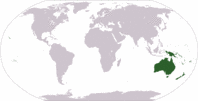Calamus longipinna
| Calamus (KAL-ah-muhs) longipinna (LOHNJ-ih-peen-ah) | |||||||
|---|---|---|---|---|---|---|---|
 Ramu River, Papua New Guinea. Photo by Dr. William J. Baker, Royal Botanic Gardens, Kew/Palmweb. | |||||||
| Scientific Classification | |||||||
| |||||||
| Synonyms | |||||||
|
| |||||||
| Native Continent | |||||||
|
| |||||||
| Morphology | |||||||
| |||||||
| Culture | |||||||
|
| |||||||
| Survivability index | |||||||
|
| |||||||
| Common names | |||||||
|
| |||||||
Contents
Habitat and Distribution
North-east, north central and south-west New Guinea, the Bismarck Archipelago and the Solomon Islands. While no records exist for the islands to the east of Guadalcanal up to and including Bougainville, it is likely that the species occurs there. Primary and secondary lowland forest, sometimes in very degraded vegetation, often on alluvium near rivers or on swampy ground, but also occurring in hill forest, from sea level to 800 m.Description
Calamus longipinna is one of the best-known rattans in New Guinea, principally because it is common in heavily collected parts of Papua New Guinea (Madang and Morobe Provinces) and it is therefore well represented in herbaria. It is also widely known in cultivation in botanical gardens throughout the world, probably as a result of a distribution of seed from Lae in the 1960's by John Womersley. It bears a distinctive papery ocrea which is usually unarmed, though heavily armed forms are known. The ocrea possesses a congenital longitudinal split on the side opposite the insertion of the petiole, a feature also shared by C. wanggaii. Although the ocrea is often quite robust, additional longitudinal splits tend to develop with age, which may result in the structure tattering and falling altogether. However, the ocrea rarely separates into fibres as it does in C. vestitus and C. reticulatus. It is most easily confused with C. vestitus, but is readily distinguished from that species by its ocrea characteristics and the narrow, triangular leaf sheath spines which are quite distinct from those of C. vestitus (described below). The vast majority of specimens display regularly-arranged leaflets, although in two specimens from the Bismarck Archipelago, Zieck NGF 36215 and Lauterbach 242, subregular and grouped leaflet arrangements are evident. In all other features, however, these specimens match C. longipinna.
Calamus longipinna is known largely from areas to the north of the main highland ranges in eastern New Guinea and in neighbouring islands as far east as Guadalcanal in the Solomon Islands (Map 1). Only three specimens from western New Guinea are known, all of which are disjunct from other known populations. Two records from the Jayapura area (Rappard BW 3322 and Sijde BW 5527) fit quite well within the concept of C. longipinna employed here, but deviate in possessing grouped leaflets and an ocrea in which the congenital split is either lacking or is incomplete. The third record from the Timika area (Baker et al. 848) lies to the south of the highlands near the western end of the south coast of New Guinea some 300 miles apart from the Jayapura collections. Again, this specimen is readily identified as C. longipinna, but it does possess certain unusual characters such as a particularly tough ocrea which disintegrates to fibres at its margins, very abundant indumentum on the sheath and rather elongate rachilla bracts. Until evidence is found to the contrary, these specimens cannot be regarded as anything other than distinctive regional forms of C. longipinna. Beccari (1908) placed C. longipinna in synonymy under C. ralumensis, but this decision cannot be upheld here as the latter is a nomen nudum. It first appeared in Schumanns Die Flora von Neu-Pommern (1898) as a name by Warburg in manuscript and is listed without description or citation of specimens. It was listed again in 1900 in Die Flora der Deutschen Schutzgebiete in der Sdsee by Schumann and Lauterbach, again without description although several specimens were cited. The protologue of C. longipinna immediately follows in the same volume, complete with Latin description and specimen citation. Having seen some of the specimens listed under C. ralumensis in this volume, we are confident that the nomen nudum is correctly linked to the accepted name C. longipinna (W.J. Baker & J. Dransfield, Calamus longipinna (Arecaceae: Calamoideae) and its relatives in New Guinea. 2002)/Palmweb. Editing by edric.
Culture
Comments and Curiosities
Uses: General use as cordage.
- IMAGE GALLERY
External Links
References
Phonetic spelling of Latin names by edric.
Special thanks to Geoff Stein, (Palmbob) for his hundreds of photos.
Special thanks to Palmweb.org, Dr. John Dransfield, Dr. Bill Baker & team, for their volumes of information and photos.
Glossary of Palm Terms; Based on the glossary in Dransfield, J., N.W. Uhl, C.B. Asmussen-Lange, W.J. Baker, M.M. Harley & C.E. Lewis. 2008. Genera Palmarum - Evolution and Classification of the Palms. Royal Botanic Gardens, Kew. All images copyright of the artists and photographers (see images for credits).
W.J. Baker & J. Dransfield, Calamus longipinna (Arecaceae: Calamoideae) and its relatives in New Guinea. 2002
Many Special Thanks to Ed Vaile for his long hours of tireless editing and numerous contributions.























